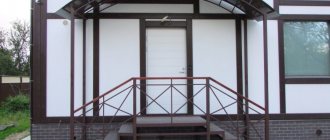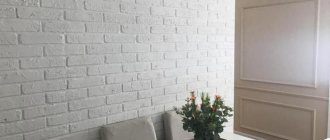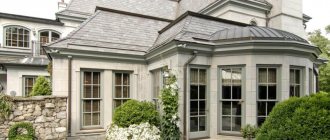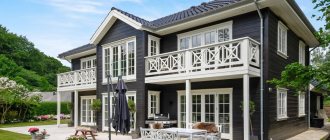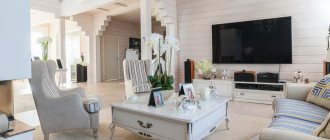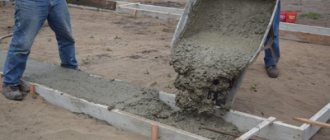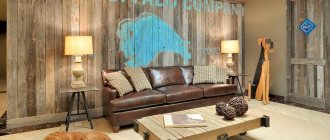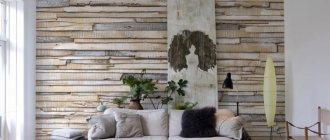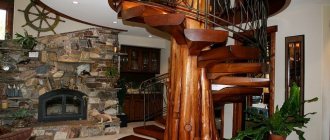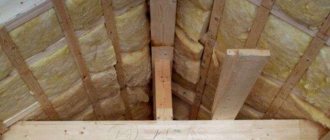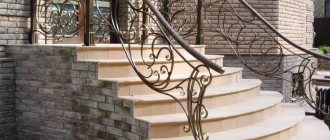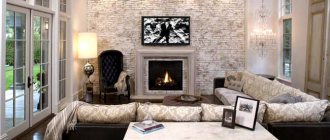Decorating walls in a kitchen in an apartment or private house is a creative and complex process. Kitchen - refers to rooms with increased requirements when choosing materials. There is always high humidity, moisture evaporation, and greasy deposits on the walls. We are all looking for the best option so that the material meets all the conditions, and the repair turns out beautiful and is inexpensive.
Tile
Decorating the walls in the kitchen with ceramic tiles is classic and functional. Despite the emergence of new developments in the field of wall decoration, tiles do not go out of fashion and remain a popular and in-demand material to this day. Its new and interesting solutions are constantly appearing.
The popularity of tiles is due to its undeniable advantages. In the kitchen, tiled wall coverings, in addition to excellent decorative characteristics, have impeccable moisture resistance and are not afraid of oil splashes and other contaminants associated with cooking. The tiles are durable and easy to clean, which is important for a kitchen, given the specifics of this room.
A relative disadvantage of the tile covering is the labor intensity of its production, since the material is laid individually and requires a certain professionalism. Another disadvantage is the high cost of work and high-quality tiles. Therefore, often the entire walls in the kitchen are not covered, but only problem areas are highlighted with ceramics.
No. 1. Ceramic tile
Just a couple of decades ago, most kitchens were completely finished with ceramic tiles, and there are many reasons for this. Today, interior fashion has changed a little, and only the work area is increasingly being decorated with ceramic tiles . This material is most suitable for the kitchen, especially for that part of it where all food preparation processes take place. The main advantages of ceramic tiles include:
- a huge assortment , because tiles can vary in size, shape and surface type. It can be glossy or embossed, matte or glossy, have any shade, pattern, ornament, imitate any material. In general, this is a real space for imagination;
- moisture resistance . The material is not susceptible to moisture and does not absorb it, so it is ideal for the kitchen, and especially for the work area;
- low flammability;
- easy to maintain , because all dirt and grease particles can be easily wiped off with just a damp cloth, and if necessary, you can use detergents. For the kitchen, it makes sense to choose tiles with the designation AA - a symbol that the material can withstand the effects of aggressive substances;
- wear resistance and durability.
Some types of tiles are very expensive, but when combining two finishing materials, when the tiles are used only in the apron area, you can afford to purchase ceramic tiles from a well-known manufacturer with a guarantee of quality and reliability. It is also worth noting that it is not so easy to lay tiles on the wall yourself, so you may need the help of specialists . Some also opt for mosaic , which is similar in properties to tiles, but allows you to create slightly different decorative effects.
Wallpapering the walls in the kitchen
Wallpaper for kitchen walls is a good choice, but it attracts a lot of criticism: they say that such material is not practical for this type of room, it absorbs odor, is afraid of grease and moisture, gets dirty and generally will not last long on the walls. In principle, there is some truth here, but you may like the other existing side of the coin in this matter more. The main advantage is their price. Wallpaper is often much cheaper than other materials, therefore, it can be changed at least every two years, updating the design of the kitchen and refreshing its walls. In addition, the process of wallpapering the walls in the kitchen is so simple that it does not cause much panic even among beginners in the field of renovation.
For the kitchen as a room with special operating conditions, fiberglass or vinyl wallpaper . They are very durable, moisture resistant and fire safe. Vinyl wallpaper comes in foam and flat. The second type of canvas is thinner, they hide defects in the walls in the kitchen less well, but are more resistant to external damage. Fiberglass wallpaper has a fabric structure. They are durable, resistant to any detergents and even acid. Their service life, according to manufacturers, is 30 years. This wallpaper is hygroscopic and can be painted, but the cost of the material is quite high.
What kind of wallpaper should I use?
Wallpaper is not usually used on the work surface; it will be an excellent solution for the rest of the room. For the kitchen, it is customary to choose washable vinyl, non-woven or glass wallpaper. Many of them can be painted and can withstand 6-7 updates. One of the popular types of vinyl wallpaper is silk-screen printing. The design has a pleasant silky shine and does not fade in the sun for a long time. Using fiberglass wallpaper you can create a beautiful texture or a perfectly smooth surface.
Luxurious textile wallpaper with embossing will perfectly complement the wood. Silvery shades will be reflected in the surface of household appliances or cladding. As for designs, the most popular are plant and floral patterns. They refresh traditional furnishings and add personality. Wallpaper can be an inconspicuous addition to the interior or a key accent.
Photo wallpapers were once in every apartment and apparently became so boring that today little attention is paid to them. In addition, the price of such finishing is a bit steep. In defense of modern photographic printing, it is worth saying that panoramic images look great in a small room; they decorate and visually enlarge the space, acting as a “window”.
Wallpaper can be combined if they belong to the same segment and differ only in color and pattern. For these purposes, manufacturers produce lines of companion models. Most often, floral patterns are complemented with stripes. The wallpaper may not match the color of the facade, but must certainly be in harmony with it. Bright, with an unusual pattern, they will dilute the monochrome atmosphere. The patchwork technique looks very unusual. It is one of the most difficult to perform, but the result is impressive. The wall decoration becomes like a patchwork quilt.
Kitchen paneling with wooden paneling
This type of wall decoration emphasizes all the exceptional properties of wood. Wooden covering makes the kitchen unusually cozy, creates a favorable healthy atmosphere in it and regulates air humidity. This kitchen looks very harmonious in a country house.
Interior wall decoration with wood is not afraid of temperature changes and sunlight. If necessary, the coating can always be washed. If it is possible to line the kitchen walls with natural wood, this should be done, as you will not have to regret it later.
Paintings and accessories
Anyone who has never seriously wondered about kitchen decor will probably be surprised how many options there are. First of all, these are, perhaps, paintings and wall clocks. Dishes take an honorable second place: decorative plates on the wall or shelves, clay utensils, beautiful service behind glass facades. The option of hanging dishes on a perforated board is becoming increasingly popular. Not the least place in kitchen design is occupied by products made from coffee beans: paintings, topiaries, sculptures. Chic installations of cutlery will add some zest.
Kitchen decoration can be anything, including children's crafts. Often craftswomen make decor with their own hands. On the Internet you can find many master classes on decorating bottles, cups, chairs and windows. There may be room for fresh flowers on the kitchen windowsill. Gardens made of succulents, which are often decorated with small fairy-tale houses made from natural materials, look very interesting.
Of course, the decor must match the overall style of the interior. If the kitchen is the epitome of high-tech, then it is unlikely that bundles of garlic and colored still lifes would be appropriate. But an abstract painting or a forged holder for wine glasses and wine bottles would be a good addition.
Kitchen Accessories are a whole world of devices designed to make life easier for the housewife. They make the environment more practical and functional. These are dispensers for soap, detergents and food products, cutting boards, baskets, sink colanders, trays, trash cans, bread bins, cutlery trays, dish baskets and of course roof rails. All these items can be made of solid wood, metal, plastic, tempered glass.
Decorating kitchen walls with panels
One of the options for decorating walls in the kitchen is decorating with wall panels. They are made from a variety of materials, have many great features and are ideal for this type of space.
Panels made of plastic, MDF and wooden panels with a protective finish are used for cladding. Depending on the style of the kitchen interior, panels made from other materials can be used. When choosing, you should pay attention to the technical characteristics of the panels, taking into account heat resistance, resistance to moisture and their hygroscopicity.
Plastic panels are especially popular among designers, homeowners and craftsmen. They have a wide range of colors and textures. In the kitchen, such cladding is not afraid of moisture, temperature changes and mold. The material has an acceptable cost and relative environmental friendliness. When choosing a wall panel for your kitchen, you should pay attention to moisture-resistant materials based on modified plywood or fibreboard. The surface of such panels is covered with laminated film or natural veneer, which provide the products with protection from moisture, mechanical damage and make them easier to care for.
What materials are used to decorate the walls?
Any kitchen is divided into several functional areas. It is worthwhile to touch upon the theme of the design of each of them, as well as familiarize yourself with design techniques, interesting solutions, and suitable materials.
Every owner, unless he has a designer working for him, is sure to face the problem of choosing finishing materials. Indeed, there are a lot of options, but it’s even more difficult to combine them. In short, for finishing the following can be used:
- Ceramic tile;
- Mosaic;
- Coloring;
- Decorative plaster;
- Wallpaper;
- Artificial and natural stone;
- Regular and decorative bricks;
- MDF, PVC panels;
- Natural wooden lining;
- Plastic lining;
- 3D tiles.
The choice of colors is primarily a matter of individual perception. However, it is worth familiarizing yourself with the opinions of psychologists about the influence of color on a person and his mood before making a final decision.
Cladding kitchen walls with stone and brick
Natural stone for finishing walls in the kitchen is considered an exclusive material. It looks great in the kitchen interior. It is better to use granite for its cladding. This material is available in the form of small mosaics or large slabs. Granite coating is resistant to grease, chemicals, heat, sunlight and water. It is very durable and can be easily cleaned from any contaminants that accompany the process of cooking on a stove. But, unfortunately, finishing the walls in the kitchen with natural granite is not affordable for everyone: this stone is quite expensive.
No. 5. Natural and decorative stone
With the help of stone, the interior of the kitchen can be transformed beyond recognition. Natural stone has many advantages: it is not afraid of water, does not burn, is hygienic and is almost always easy to care for . You can use marble, granite, slate, sandstone or any other type of stone that best suits your specific design idea. But natural stone is an expensive pleasure: the material itself and installation work are quite expensive, and the material also weighs quite a bit.
An excellent alternative to natural stone is its artificial counterpart . It looks very similar to natural stone, it is made from cement, sand, plasticizers and dyes, and it can be given any appearance, so it can imitate any type of natural stone. This material is lightweight, easy to install and maintain, much cheaper than natural stone, tolerates moisture well, does not burn, is durable and strong, it can be washed and even rubbed . True, in terms of service life it is inferior to natural stone, but this disadvantage is fully compensated by its price, lightness and other useful performance properties.
The stone withstands all the influences that are possible in the kitchen so well that it can be used to decorate the walls in the apron area, not to mention decorating the dining area. But you need to be careful with stone: when it decorates part of the room, the room looks stylish and unusual, but if all the walls are decorated with stone, then there will be no trace of comfort and warmth left. This is an option for those who want to style their kitchen as a castle.
Painting the walls in the kitchen
This type of finishing is considered very practical and original, but not always cheap. The reason for the high price is a whole series of preparatory work prior to painting the kitchen walls. This includes cleaning, leveling, priming, etc. If the walls are clean and even from the beginning, there should not be any particular problem with painting them. Today it is possible to choose any color, and a variety of paint textures allow you to create an original and often exclusive design.
According to many experts, the ideal material for finishing walls in the kitchen, taking into account the price-quality ratio, is water-dispersion paint. It protects structures from moisture and allows air to pass to their surface without disturbing its exchange in the room. After the material dries, a coating remains on the wall, which can have any color depending on the pigment added to the composition.
No. 2. Painting
Painting the walls in the kitchen is one of the most budget options , but it is far from the worst. Since the paint can be completely different, even any shades, in the kitchen you can create exactly the interior that is needed. You can mix different shades, create designs and patterns, but at the same time it is important that the paint meets the minimum requirements imposed by the characteristics of the kitchen space. So, the surface should be easy to clean and therefore be moisture resistant. Among other advantages of the paint, it is worth noting the ease of application - anyone can do it, as well as excellent maintainability, since it is very easy to update the coating with a new layer of paint .
To use this finishing option, it is important to properly prepare the surface of the walls : they must be smooth and free of defects, because cracks and depressions will be very noticeable under a layer of paint. By the way, a glossy finish often looks better, is easier to clean, but will highlight all the unevenness, so often the choice falls on matte paint.
What paints will work for the walls in the kitchen?
- acrylic and latex . They are easy to apply, dry quickly, adhere well to the base, you can achieve any shade using color, but before painting you need to dry the walls well: several weeks should pass after plastering them. Acrylic paint is even more wear-resistant and moisture-resistant than latex paint. The surface painted with this paint is easy to clean and does not lose vapor permeability. Latex paints are often used for painting wallpaper; they demonstrate excellent durability and strength;
- Alkyd paints are used infrequently today, because when they are applied and dry, an unpleasant, pungent odor is formed. Otherwise, they are excellent for kitchens: wear-resistant, moisture-resistant, perfectly resistant to temperature changes, exposure to direct sunlight, easy to apply, economical;
- Silicone paints combine the advantages of previous types of paint. They have amazing performance properties, dry quickly and can be applied to freshly plastered walls. Their only drawback is the high price.
Even moisture-resistant paints are best used away from the work area to reduce the risk of grease and particles of various products getting onto the surface. Combining different finishing materials in the kitchen is also a great way to highlight cooking and eating areas.
Decorative plaster
An equally popular type of finishing is decorative plaster. Today, the construction market offers a lot of different options with which you can create a unique and original coating. The advantage of decorative plaster is that the same composition always produces a unique pattern that you can create yourself.
It is better not to use plaster, like wallpaper, in areas of direct contact with water and dirt. If your plans are to perform some kind of unique designer finishing using plaster, then it will be difficult to cope with on your own, but almost anyone can cope with the most ordinary process of applying plaster. You should also be prepared that cracks may appear on the plastered surface.
How to decorate the walls in the kitchen
The modern market offers such a variety of options that it can be easy to get confused. The most important thing to remember when purchasing material is that it must match the characteristics of the space. The kitchen is a place where there is always a lot of moisture, dirt, and so on.
The material must be resistant to such influences and not be afraid of regular cleaning. Otherwise, it all depends on the design features of the space and personal preferences.
Wallpaper: washable and paintable
The use of washable wallpaper or a paintable option for kitchen walls is becoming increasingly popular. Both vinyl and acrylic options are suitable. The main thing is not to choose paper wallpaper in the kitchen; they do not withstand high humidity conditions. This type of finishing helps to significantly save the budget for the entire renovation, since the cost of wallpaper is low, and the sticking process is simple enough to do it yourself.
The most durable option is paintable glass wallpaper
Not all kitchen walls are often covered with wallpaper, but only the dining area is highlighted with it.
Architectural concrete, concrete panels
This is a real trend today. Concrete is used everywhere, in any room, especially when it comes to industrial style. Architectural concrete panels create a simple design in the kitchen that is somewhat reminiscent of a factory building. The surface of the concrete is treated with special impregnations, which allows the material to be moisture resistant and easy to clean.
Gray surfaces are more suitable for spacious rooms; in confined spaces this finish should be used with caution
Concrete walls are often used to decorate minimalist interiors.
Decorative plaster
Very often, decorative plaster becomes the most successful option for finishing a kitchen, even better than wallpaper. The plaster is distinguished by its strength, wear resistance, and it also looks very beautiful and impressive.
The same composition of decorative plaster always produces a unique pattern that you can create yourself
An important nuance is that, unlike wallpaper, finishing with decorative plaster yourself will be quite difficult, and therefore you will have to resort to the help of professionals. The material itself also costs more than other types of coatings.
Ceramic tile
Another very popular option is ceramic tiles. The big advantage is that this material is very easy to clean, which is extremely important for the kitchen space; you just need to wipe the surface with a damp cloth. Light-colored tiles - white, beige - will reflect the light of the sun's rays and visually make the room even more spacious and bright. You can add coziness with simple culinary-themed decor.
Ceramic tiles are a classic finishing option that will last for many years.
The tiles can be either multi-colored or plain. You can lay out various unusual patterns using rich, bright colors. This will add freshness and vigor to the interior. If the tiles are monochromatic, you can lay out a row of tiles with a pattern or decor in one stripe - such an accent will enliven the interior and make the design of the apron more interesting.
The tiles have impeccable moisture resistance and are not afraid of oil splashes and other contaminants.
A popular type of tile on the market today is patchwork. It can be laid out on walls and floors in combination with plain surfaces in neutral colors. Patterned options are especially popular.
An apron made using the patchwork technique will fit perfectly into any rustic style kitchen.
If it turns out that the tile above the work surface is not covered with a layer of glaze, then it can be covered with a sheet of tempered glass to make caring for the surface even easier.
MDF panels
The easiest to install and the most varied choice of colors, patterns and designs can be called this type of finishing materials, such as MDF wall panels. They differ from wallpaper, plaster and painting in that they do not require additional steps to prepare the surface. There is no need to pre-level the walls, which means it will take much less time. The panels are better in terms of environmental friendliness and durability. They tolerate kitchen conditions well with frequent temperature changes and high humidity levels.
MDF panels with imitation of natural wood are very popular
When choosing panels, special attention should be paid to their heat resistance and moisture resistance
Natural and decorative stone
Stone, especially natural stone, can be called an ideal material for surface decoration. It looks aesthetically pleasing, and its functional value allows it to compete with ceramic tiles. The price at the moment is not so high and is quite acceptable, especially in relation to the quality. The stone surface is always unique, which adds a special status to the interior.
You can cover all the walls of the kitchen with decorative stone or highlight any area with it, it all depends on your taste and wallet
Marble will look most impressive in the design of a room. It is very durable, beautiful, but very expensive. Among other advantages, it should be noted that stone, due to its naturalness, is very environmentally friendly.
Marble wall decoration is well suited for kitchens in modern interior styles
A stone such as slate will help realize a modern style, but at the same time provide a natural spirit. The advantages of this stone are that it:
- cheaper than marble;
- waterproof;
- persistent;
- easy to clean.
Natural stone is a very impressive decor option, but requires significant investment
An excellent material is natural stone mosaic. Popular mosaics from:
- marble,
- travertine,
- slate,
- onyx.
Onyx can be used to make walls and partitions in the form of panels. Due to its translucency, onyx is very suitable for installing lighting.
The finishing of the kitchen apron with small pebbles looks interesting
Mosaic
Mosaic will always look impressive and modern. Mosaic pieces can be made of ceramics, glass, natural stone, metal or wood. Using this technique, you can add variety to the interior, but you need to approach the choice very carefully, especially when deciding on color. You need to choose a mosaic to match the floor, ceiling or kitchen furniture.
An apron lined with mosaic tiles with a shiny surface looks gorgeous.
Several different materials combined into one composition will look especially impressive. The fact that mosaics can be placed even on uneven surfaces can help.
Photo wallpaper
This type of finishing materials is becoming more popular every year. Modern examples are made with very good quality, with a variety of designs and improved functionality. The plot can be associated with any style:
- sea;
- tropical;
- rustic;
- industrial;
- Provence
Modern photo wallpaper for the kitchen has a moisture-proof layer
Photo wallpaper is located on one wall, this can be the surface above the tabletop. For durability and easy cleaning, it is better to cover the photo wallpaper with a sheet of tempered glass.
Flexible stone
Flexible stone, although created using special technologies, is still a natural material. Particularly suitable for use as an accent in a classic style, as well as in an Art Deco interior. Flexible stone is very durable and can last more than 35 years. Tolerates extremely high temperatures and temperature changes well.
Flexible stone is sold in rolls and is somewhat reminiscent of wallpaper
This material can be used anywhere - on the walls, on the apron, for cladding arches and niches
The material is lightweight, and therefore its installation and assembly are quite simple. This coating is very difficult to scratch or damage, because the flexible stone is very resistant to mechanical stress. Easy to clean. Among the disadvantages, we can note the fact that to install such material you will need perfectly smooth walls.
PVC panels
PVC tiles are a fairly budget option, and therefore are in demand among buyers. Installation of plastic is very simple and does not require leveling the walls. One of the advantages of the material is that it is easy to maintain. For cleaning, you can use napkins and damp cloths. They also take well to cleaning with cleaning products. In addition, PVC panels are very resistant to high temperatures.
Plastic panels are a budget option that makes it easy to hide all the imperfections of the walls
The undeniable advantage of PVC panels is simple and accessible installation for everyone.
Thanks to modern technologies, such panels can withstand loads of up to 120 degrees. An undeniable plus is a large selection of colors, patterns and designs.
Apron decor
In the kitchen there is a space where the housewife spends most of her time - a work area, which includes a stove, sink and other devices that help in cooking. Wall finishing material in this area requires moisture resistance, heat resistance and washability. This does not mean that the apron will have a nondescript appearance; thanks to the abundance of finishing materials, this area can become a key element of the interior.
Apron design
A kitchen apron is not only clothes with colored ties and gastronomic patterns. This is also an important part of the kitchen - the wall between the countertop and the upper cabinets. Even 20 years ago, no one thought that it could somehow be highlighted in the overall interior; why is this even necessary? Modern aprons are so varied in design that it can be difficult to make a choice.
What should your kitchen apron be like: a bright accent or an unsightly work surface? It will complement the marble countertop or create a contrast with the finishing material. The apron should be expensive and presentable, or you can save money on this detail. Having answered these questions, you can already roughly get your bearings. You can finally decide what it will be like by reading all the possible options and looking at photos on the Internet.
To construct a working wall, you can use the following materials:
- Ceramic tiles;
- Natural or artificial stone;
- Brick;
- Tempered glass;
- Mosaic;
- Metal;
- PVC, MDF panels;
- Plastic lining (can be used for budget repairs).
Five design tips
- When choosing wallpaper and furniture, try not to overload the interior; one thing should be the emphasis. Combine spectacular bright wallpaper with laconic and simple kitchen facades, but for a catchy set with an intricate design you will need a neutral, calm background.
- When choosing a color scheme, not only the shade is important, but also its belonging to the color scheme . Warm shades should be combined with the same warm color “brothers”, cold shades should be combined with cold ones.
- When combining several types of wallpaper, choose one price category . The best solution is companion wallpapers belonging to the same manufacturer’s collection.
- Wallpaper with a pattern can be used to visually adjust the area of a room . Thus, vertical stripes are suitable for low kitchens, and horizontal stripes for narrow ones. To avoid getting bored with stripes, give preference to soft colors that gradually flow into each other.
- For a kitchen facing west or north, choose warm shades - yellow, cream, grass green, light peach, orange, apricot and light brown. For southern and eastern kitchens, pale blue, light green, blue, silver, and white are suitable.
Design options
The design of kitchen walls allows you to make the room not only cozy and comfortable, but also attractive, bright, lively, and cheerful. Various design methods help to zone a room, highlight its advantageous aspects and hide possible shortcomings.
Exotic ornaments, floral patterns, images of fruits, vegetables, dishes create the right mood
They, according to psychologists, have a positive effect on a person’s appetite. You can achieve your goal by combining wallpaper and plastic panels, painting and natural stone, tiles and photo wallpaper.
Decorating kitchen walls can be called a complex process, requiring increased care and accuracy.
Despite the fact that the design of some types of finishing materials does not require preliminary leveling of the walls, care must be taken to ensure high-quality preparation of the surfaces. Moisture-proof panels, tiles and vinyl wallpaper will provide reliable protection against fungus and mold. By combining them with lining or stone, you can create a unique design. When working on the design of a kitchen, they select not only colors and shades, but also decorative materials of similar quality.
Basic material requirements
The preparatory stage is almost more important than the rest - you need to choose a material that will look beautiful, emphasize the advantages of the room, hide the shortcomings, and also meet the basic requirements:
- Water resistance. Water is constantly flowing in the kitchen, something is being washed, poured, and cleaned. The walls should easily withstand high humidity and not suffer from splashes of water, even boiling water.
- Resistant to temperature changes. In the summer, when borscht or jam is being cooked in the kitchen, the temperature in the room rises significantly, hot air stays above the stove - the material should easily withstand it, cool down without cracking.
- Easy to care for. Pieces of food, splashes of grease, and soot get on the walls in the kitchen - they should be easy to clean, the use of chemicals should not cause damage, and even after the fiftieth cleaning, the material should retain its original brightness.
- Hygiene. Mold, mildew, and pathogens should not be able to multiply on the walls, even if soot and grease are constantly deposited on them. Otherwise, food prepared in the kitchen will be harmful.
Combining practicality with aesthetics
Thus, pure wood cannot be used in the kitchen - only wood treated with special compounds, varnished, and resistant to humidity and temperature changes. And when using synthetic materials, you need to make sure that they do not emit toxic compounds.
